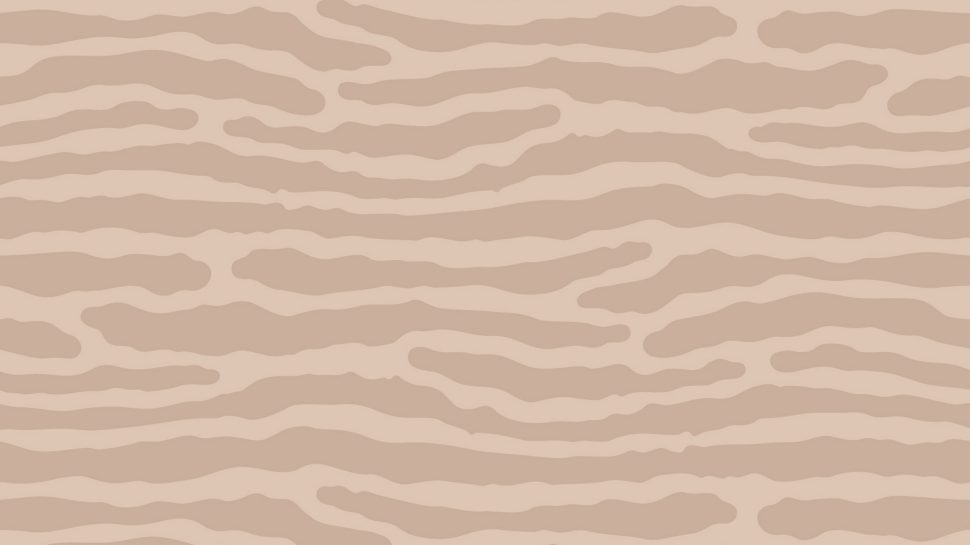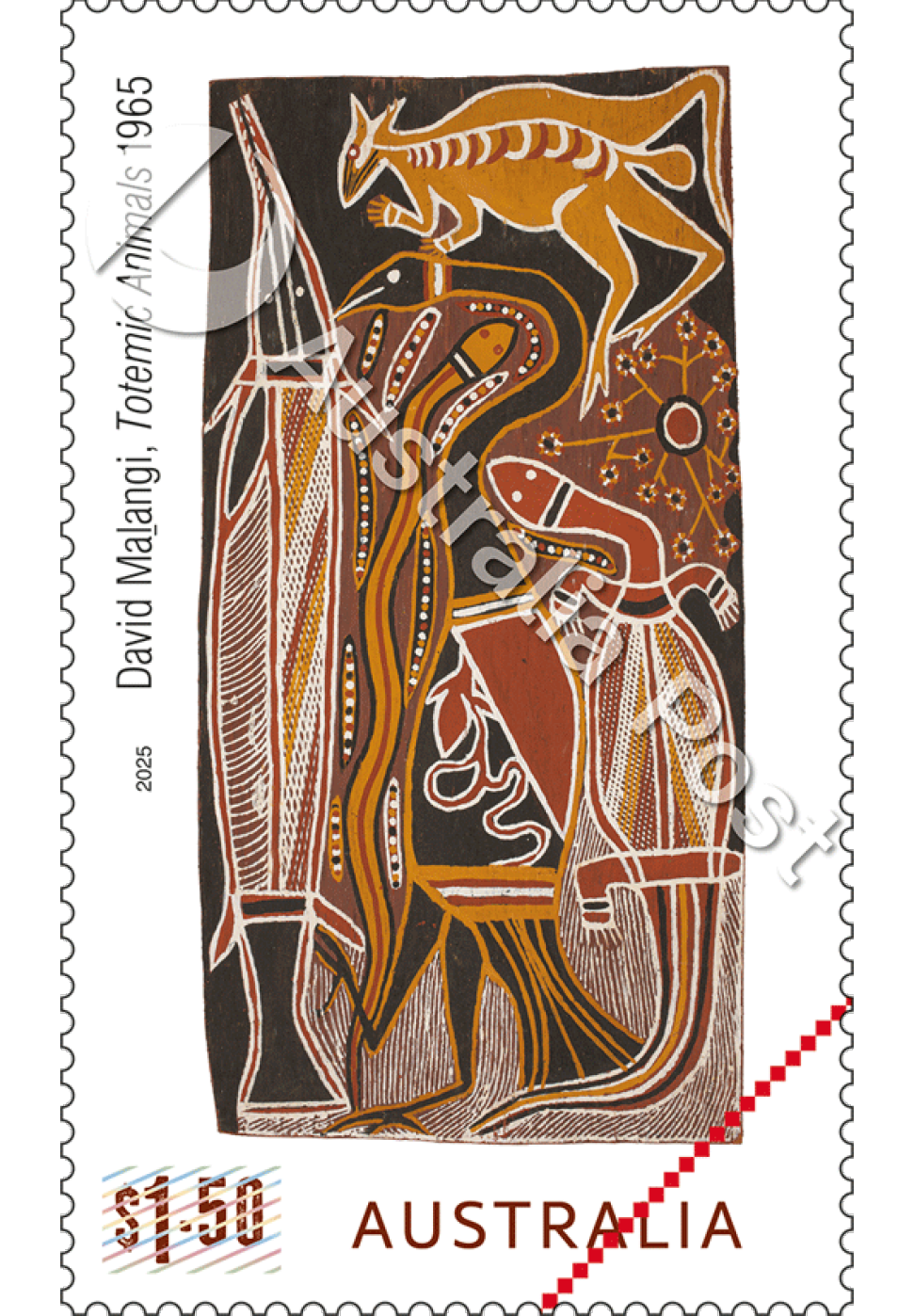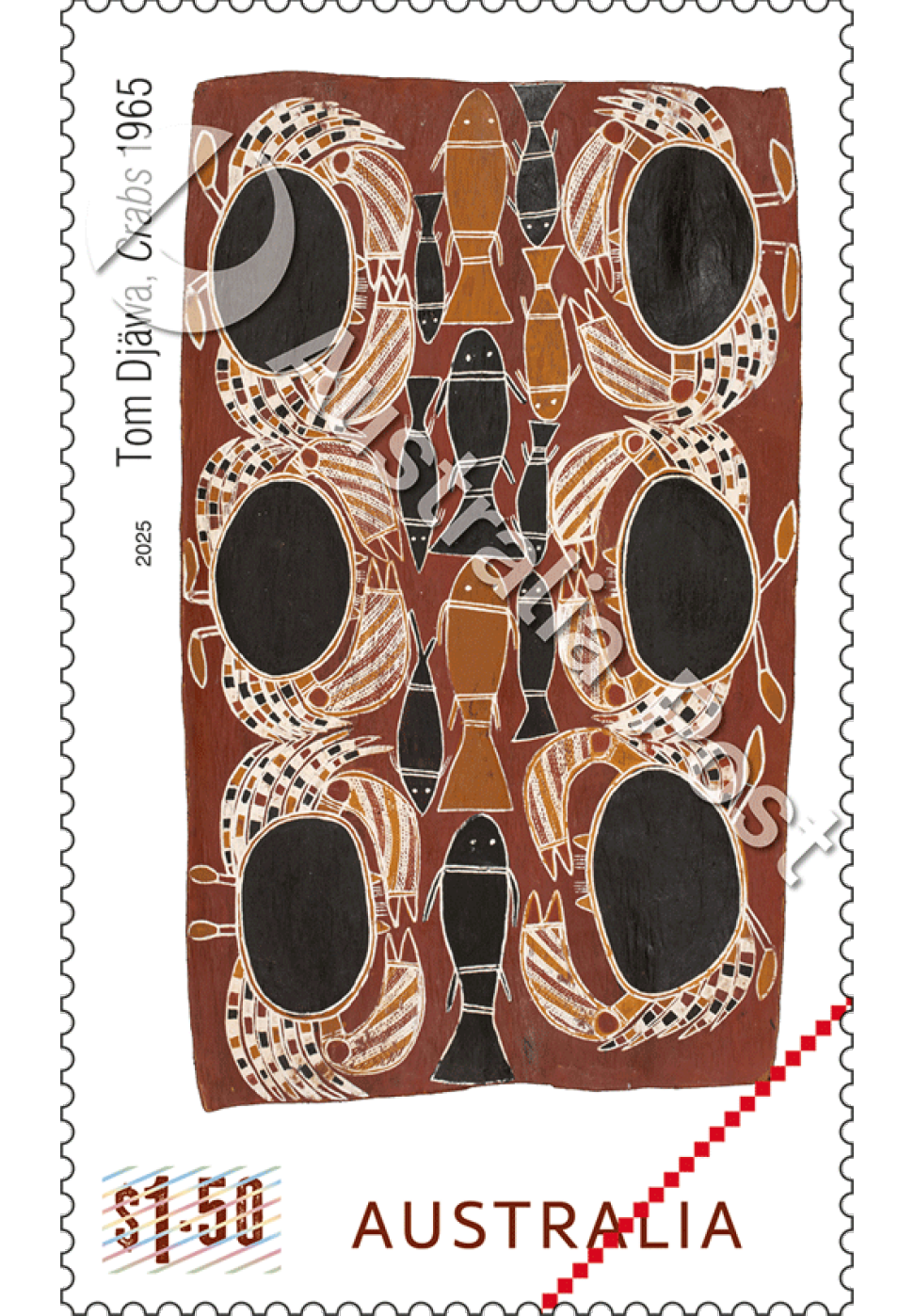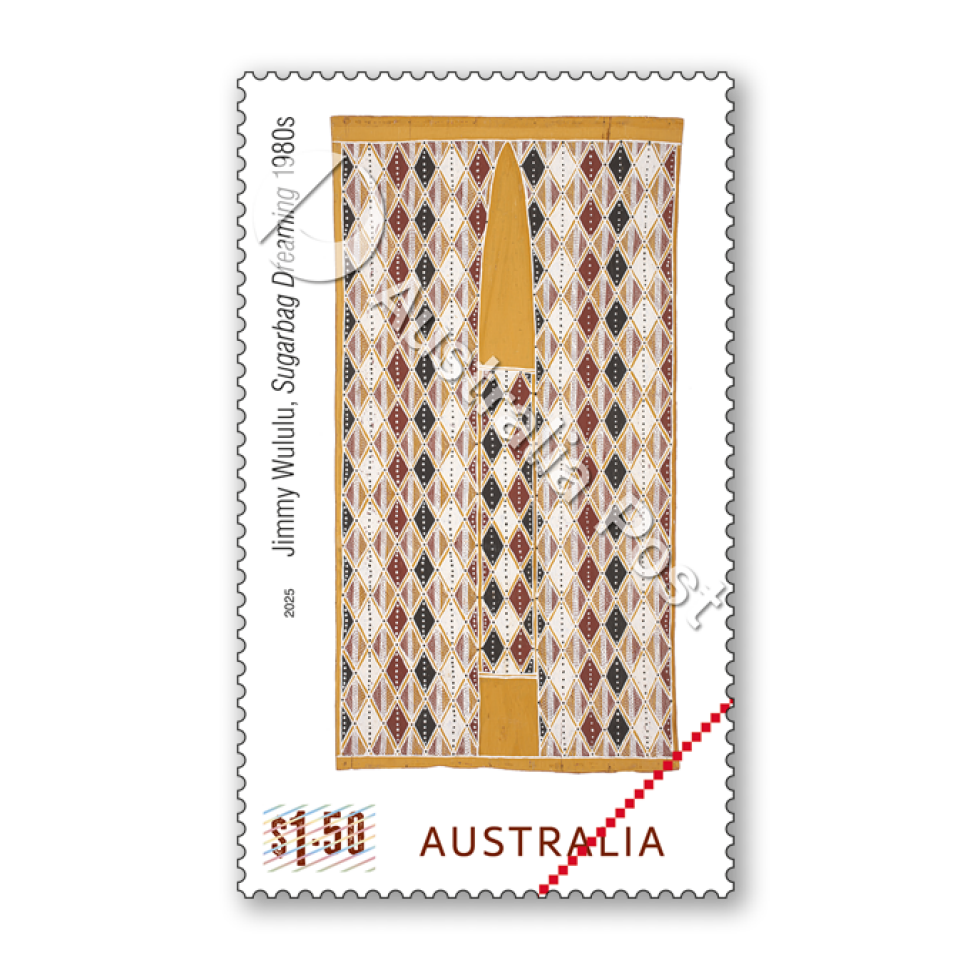Overview
This issue features paintings on bark by three eminent Yolŋu artists associated with Milingimbi and Ramingining in north-central Arnhem Land, Northern Territory.
While Indigenous peoples have been painting on bark for millennia, in the early 20th century missionaries and anthropologists encouraged the practice as a marketable artform, in part to provide income for Aboriginal artists. The attractive, small portable bark paintings were sold to private and museum collections in Australia and internationally. Today, bark painting is a major Indigenous artform that is collected and exhibited around the world.
The bark support for the artworks is derived from a species of eucalyptus, Darwin Stringybark Eucalyptus tetrodonta. The bark is stripped from the tree during the wet season, when the sap is rising and the bark is easier to remove. The curved sheet is cured over fire, then flattened under weights for a few days before the surface is smoothed ready for paint. Pigments are made mainly from red and yellow ochres, charcoal and white clay. Binders include the traditional egg yolk, beeswax or orchid juice and, in more recent times, water-soluble wood glues. The exquisitely detailed paintings are executed with fine brushes and the imagery is generally derived from the artists’ totems and creation stories of their clans and Country.
All three bark paintings featured on the stamps are held in the collection of the National Museum of Australia, Canberra.
Technical specifications
- Issue date
- 10 June 2025
- Issue withdrawal date
- 1 January 2026
- Denomination
- 3 x $1.50
- Stamp & product design
- Simone Sakinofsky, Australia Post Design Studio
- Paper: gummed
- Tullis Russell 104gsm Red Phosphor / Blue PVA Stamp Paper
- Printer: gummed
- RA Printing
- Printing process
- Offset lithography
- Stamp size (mm)
- 50 x 30
- Minisheet size (mm)
- 135 x 80
- Perforations
- 14.40 x 14
- Sheet layout
- Module of 25
- FDI postmark
- Darwin, NT 0800
- FDI withdrawal date
- 9 July 2025
$1.50 David Malangi, Totemic animals 1965
One of Australia’s greatest artists, Dr David Malangi (1927–1999) belonged to the Manharrŋu Ḏaymirriŋu clan, Dhuwa moiety. He was born at Mulaŋa on the eastern bank of the Glyde River in central Arnhem Land. He lived and worked at Milingimbi island and Ramingining. His ancestral homelands included three areas in central Arnhem Land near these two places.
His work, Totemic animals, was painted at Milingimbi in 1965. The stamp work includes a wallaby, waterlily, waterhole, snake, stork bird, water goanna, mangrove jack fish and white berries, all of which relate to the artist and the seasonal song cycle about Gurrmirriŋu, the ancestral hunter and guardian of the Mannharrŋu people.
Malangi is well known for his bark painting that was reproduced without his permission on the new decimal currency $1 note issued in 1966. He eventually received a belated payment for the use of his artwork on the note.
Malangi was one of the first Aboriginal artists to be exhibited as the Biennale of Sydney (1979) and at Australian Perspecta (1983). His work has been exhibited internationally, including at the São Paulo Biennial (1983); in the exhibition Dreamings: The Art of Aboriginal Australia at the Asia Society in New York (1988); and at the Musée national des Arts d’Afrique et d’Océanie in Paris (1995). Malangi was instrumental in establishing the Aboriginal Memorial (1987) at the National Gallery of Australia, which commemorated 200 years of European occupation and is on permanent exhibition. In 1996 the artist was awarded an honorary Doctorate from the Australian National University and in 1998 he was honoured with the Australia Council Emeritus Award.
$1.50 Tom Djäwa, Crabs 1965
Tom Djäwa (1905–1980) was a leader of Yolŋu people at Milingimbi island and the acknowledged leader of the Gupapuyŋu Daygurrgurr clan of the Yirritja moiety on Milingimbi. Djäwa was born on his traditional homelands at Djiliwirri on the west coast of Buckingham Bay in eastern Arnhem Land.
Djäwa was very aware the importance of educating the wider Australian community about Yolŋu culture and knowledge in order to preserve it, and collaborated with anthropologists, ethnomusicologists and linguists who visited the island. He appeared in documentary films and in 1954 was one of a group of Milingimbi men who danced before Queen Elizabeth II at Toowoomba.
The stamp painting Crabs from 1965 depicts mud crabs found among the mangroves on the shores of Buckingham Bay. The mud crab is also Djäwa’s mother’s clan totem. As they feed, the crabs clean the beach, and this is seen as symbolic of the cleaning of the bones of the dead during mortuary rites. The Crab Dance of the Ŋärra (traditional law) ceremony mimics the crabs’ activities. Tom Djäwa’s bark paintings have been exhibited in Australia and around the world and his work is held in major collections worldwide.
$1.50 Jimmy Wululu, Sugarbag Dreaming 1980s
Jimmy Wululu (1936–2005) belonged to the Gupapuyŋu Daygurrgurr clan of the Yirritja moiety. He grew up at the Milingimbi Methodist Mission and, like Tom Djäwa, his Country is Djiliwirri in Central Arnhem Land.
The work on the stamp, Sugarbag Dreaming, was painting in the 1980s and refers to one of Wululu’s primary clan totems, Niwuda (Yirritja moiety) or wild honey, also called sugarbag. His other main totem was Ginginy, the Eel-tailed Catfish. The Dreaming is associated with the Honey ancestor at Djiliwirri. The diamond shapes are schematic representations of the cells in a beehive, the different colours showing cells empty, half-full and full of honey. The trunk of the tree appears at the centre of the painting. This painting portrays the sacred "sugarbag" or wild honey design which was given to the Gupapuyŋu by the creator being Laindjung. The design symbolising the honey is also painted on the bodies of dancers during Ŋarra men’s ceremony and Dhapi (making man) ceremony. When painted on an initiate’s body or a ceremonial object, this design invokes the power of the honey spirit who created the sacred songs, dances and designs for this honey type in the Wangarr (ancestral period or Dreaming).
Wululu had worked as a builder and his use of a straight rule is often reflected in his artworks. His practice included wooden memorial poles as well as bark paintings and he was one of the contributors to the Aboriginal Memorial 1987 at the National Gallery of Australia. Wululu's work has been included in major exhibitions such as the Dreamings: The Art of Aboriginal Australia at the Asia Society in New York (1988), and 15 of his poles were featured in the Magiciens de la Terre show in Paris in 1989.




